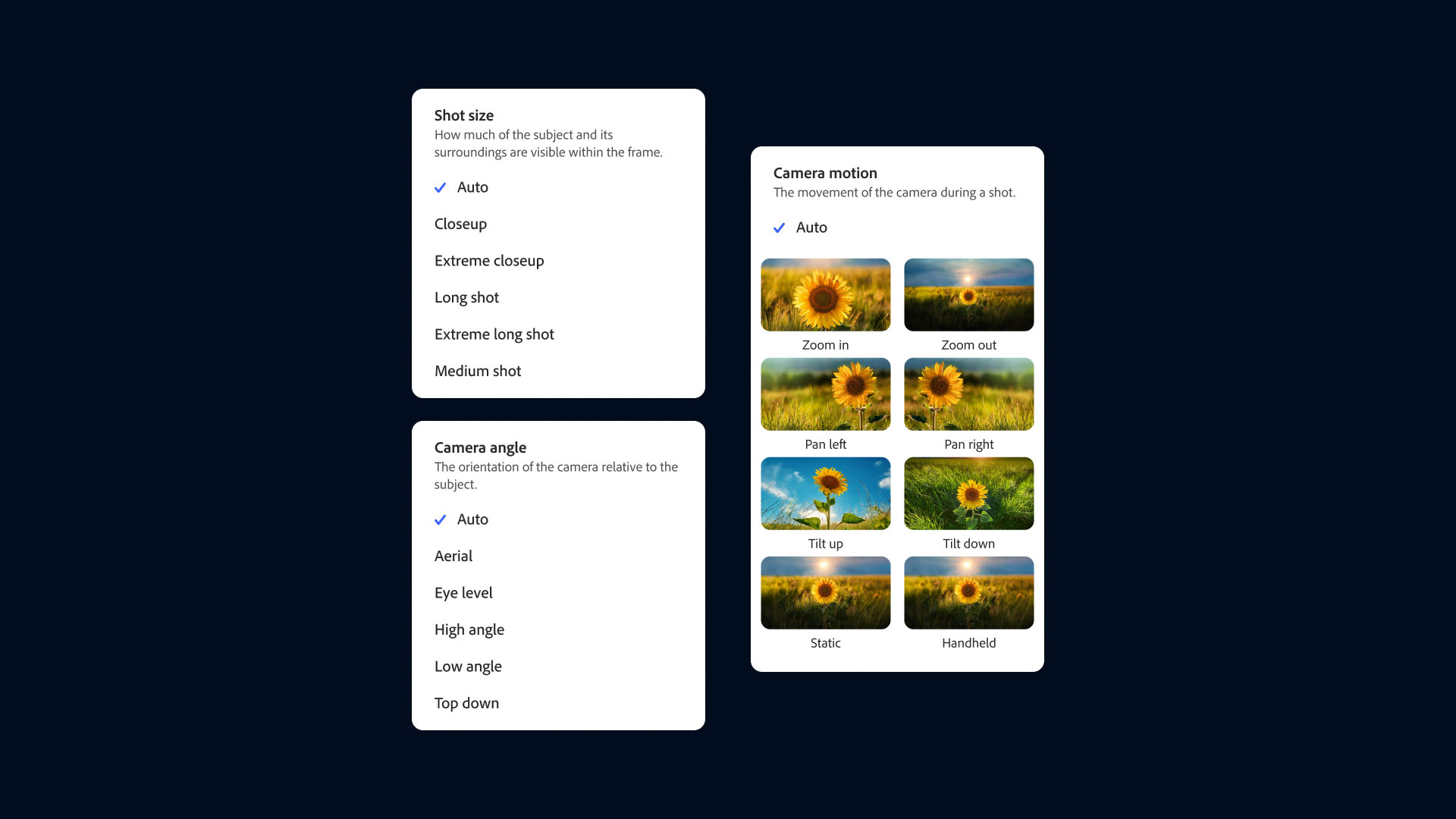Adobe has added generative video to Firefly’s skill set, and the results certainly look promising. You’ll be able to use Adobe Firefly Video Model to create AI-generated video just as easily as you currently can with AI-generated images using Firefly. The initial video that Adobe has produced certainly looks impressive:
Rather than seeing Adobe Firefly Video Model as a way to replace human-created content, Adobe is pitching it as a way to augment your existing video content, giving you the ability to seamlessly fill in gaps in your project by generating B-Roll, adding intros, or extending scenes. The ability to extend a scene is integrated into Premiere Pro. By generating extra frames you can hold a shot for a moment or two longer and it should look as if you simply carried on filming. The same can be done with audio, so you can generate audio to help you transition from one scene to another.

Choose camera motion, zoom and handheld effects. (Image credit: Adobe)
If you want to generate new video using Adobe Firefly Video Model there’s a text-to-video mode, so you can simply enter text prompts to describe the sort of video you want to create and Firefly will produce it. This means you can enter a prompt like “Close up of a dog on a skateboard on a sunny day”, and it will generate the video. You can also mention camera controls in your prompt, like angle, motion, or zoom.
Another thing you can do with Adobe FireFly Video model is feed it images and get it to generate video from them. Used in this way, Firefly becomes a part of a larger number of apps all working together to help you create content.
A big advantage of using Adobe Firefly Video Mode, and something that sets it apart from its competitors, like Sora, is that it is commercially safe. Because Firefly is trained on Adobe’s own library of video and images, there should be no copyright issues, which have so far plagued many AI image and video generators.
Adobe Firefly Video Model will be coming to Creative Cloud, Experience Cloud, and Adobe Express later this year.
Continue reading...
Rather than seeing Adobe Firefly Video Model as a way to replace human-created content, Adobe is pitching it as a way to augment your existing video content, giving you the ability to seamlessly fill in gaps in your project by generating B-Roll, adding intros, or extending scenes. The ability to extend a scene is integrated into Premiere Pro. By generating extra frames you can hold a shot for a moment or two longer and it should look as if you simply carried on filming. The same can be done with audio, so you can generate audio to help you transition from one scene to another.

Choose camera motion, zoom and handheld effects. (Image credit: Adobe)
If you want to generate new video using Adobe Firefly Video Model there’s a text-to-video mode, so you can simply enter text prompts to describe the sort of video you want to create and Firefly will produce it. This means you can enter a prompt like “Close up of a dog on a skateboard on a sunny day”, and it will generate the video. You can also mention camera controls in your prompt, like angle, motion, or zoom.
Another thing you can do with Adobe FireFly Video model is feed it images and get it to generate video from them. Used in this way, Firefly becomes a part of a larger number of apps all working together to help you create content.
Commercially safe
A big advantage of using Adobe Firefly Video Mode, and something that sets it apart from its competitors, like Sora, is that it is commercially safe. Because Firefly is trained on Adobe’s own library of video and images, there should be no copyright issues, which have so far plagued many AI image and video generators.
Adobe Firefly Video Model will be coming to Creative Cloud, Experience Cloud, and Adobe Express later this year.
You may also like
- What is OpenAI's Sora? The text-to-video tool explained and when you might be able to use it
- Best Adobe Premiere Pro alternatives of 2024
- Adobe Creative Cloud (2024) review
Continue reading...

